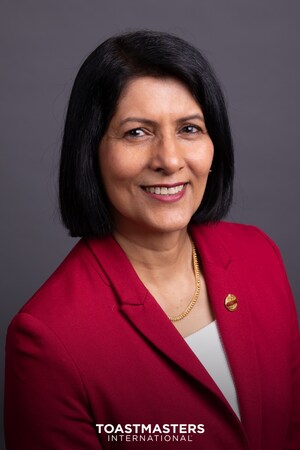Toastmasters' public speaking skills give debaters the edge
Proven techniques that even presidential candidates can use to persuade voters
RANCHO SANTA MARGARITA, Calif., Oct. 9, 2012 /PRNewswire/ -- Since the very first televised presidential debate between John F. Kennedy and Richard M. Nixon in 1960, a candidate's debate performance, including facial expressions, gestures, vocal tone, clarity and ability to influence, have meant the difference between winning and losing voters' confidence. Toastmasters International, a global organization devoted to communication and leadership skills development, has taught millions of people around the world winning public speaking skills since 1924. Its proven program can help anyone, including presidential candidates, persuade an audience and dominate the debate.
"To be persuasive, candidates must be succinct, passionate and memorable," says Toastmasters Past International President Gary Schmidt. "Candidates in a debate have only minutes to express their knowledge and reassure voters they are the best person to lead our nation at this time. It is a tall order. The most prepared candidates pull it off and make it look easy," says Schmidt, a former staff member of two U.S. senators.
With two more presidential debates scheduled, on October 16 and October 22, both President Obama and Governor Romney could benefit from these proven strategies:
- Describe the problem, outline its cause and state a solution. A thorough description of the problem and why it needs attention will position the audience to support your cause. Underlining its severity will help sell its significance. For instance, give specifics on how a recession will affect people in one community and lay out a solution to create more jobs.
- Speak with authority. You may not have a Ph.D., but you do have personal knowledge and life experience. Leverage your experience on this topic and give the audience a reason to believe you and shift their perspective.
- Appeal to the listener's emotions. Start with a funny or heartwarming story, then move into logic and fact.
- Use logic. Create compelling content by basing your message on research, facts and statistics. Illustrate your points with personal stories. Use descriptive words and create strong, vivid images.
- Find common ground. Establish mutual values, and talk with your audience as one of them by using personal pronouns such as "we," "us" and "ours." Ask rhetorical questions and share personal experiences to show commonality.
- Align nonverbal communication. More than 90% of communication is nonverbal. Match your gestures, voice and movement to your message. Eye contact is crucial in building trust.
- Conclude. Finish by restating your message. Incorporate a strong call to action, a solution to the problem or issue.
- Prepare for rebuttals. Acknowledge opposing viewpoints or concerns of others. Then tactfully explain why you disagree. Back up your assertions with facts and research.
The ability to convince and persuade is important in more than just debates. It can help an individual get a new job, obtain a promotion or make better business deals. For more information about Toastmasters' education program, visit www.toastmasters.org.
About Toastmasters International
Toastmasters International is a nonprofit educational organization that teaches public speaking and leadership skills through a worldwide network of clubs. Founded in October 1924, the organization currently has more than 280,000 members in 13,500-plus clubs in 116 countries. Each week, Toastmasters helps more than a quarter million people of every ethnicity, education level and profession build their competence in communication so they can gain the confidence to lead others. For information about local Toastmasters clubs, please visit www.toastmasters.org. Follow Toastmasters International on Twitter @Toastmasters.
SOURCE Toastmasters International
WANT YOUR COMPANY'S NEWS FEATURED ON PRNEWSWIRE.COM?
Newsrooms &
Influencers
Digital Media
Outlets
Journalists
Opted In





Share this article